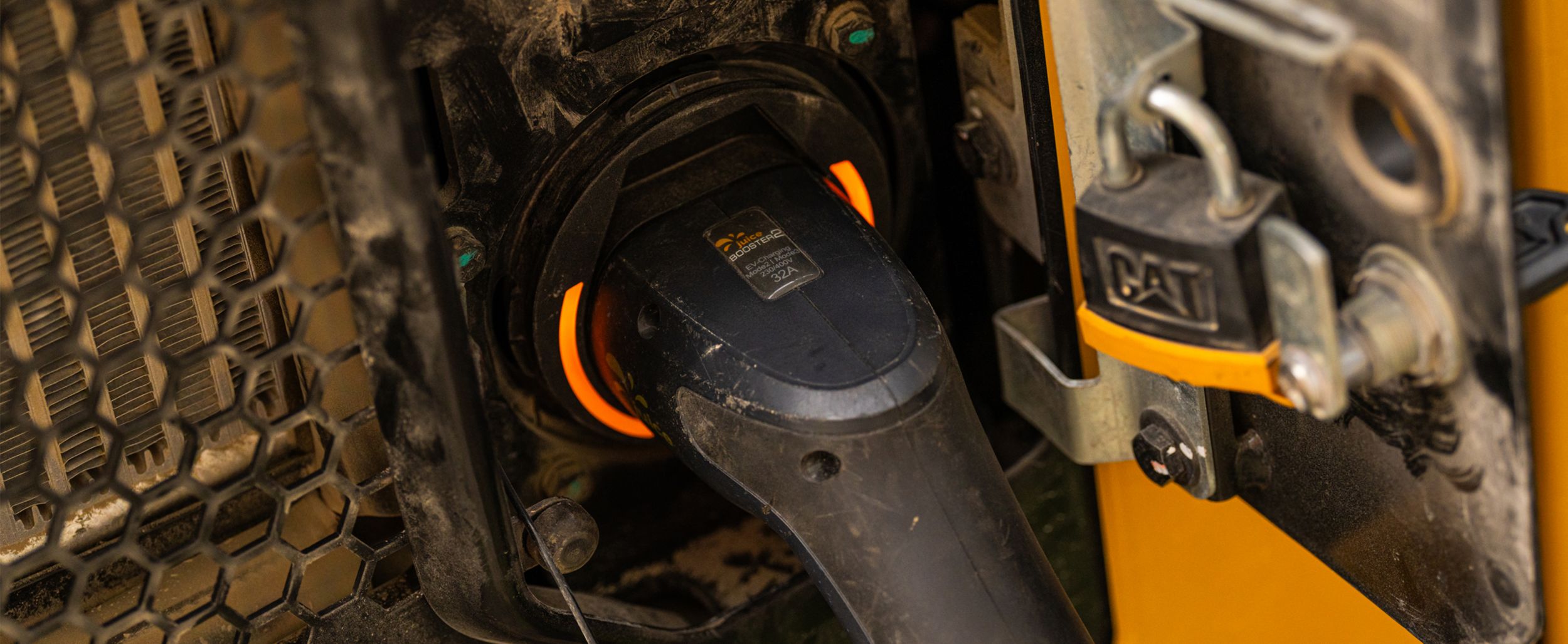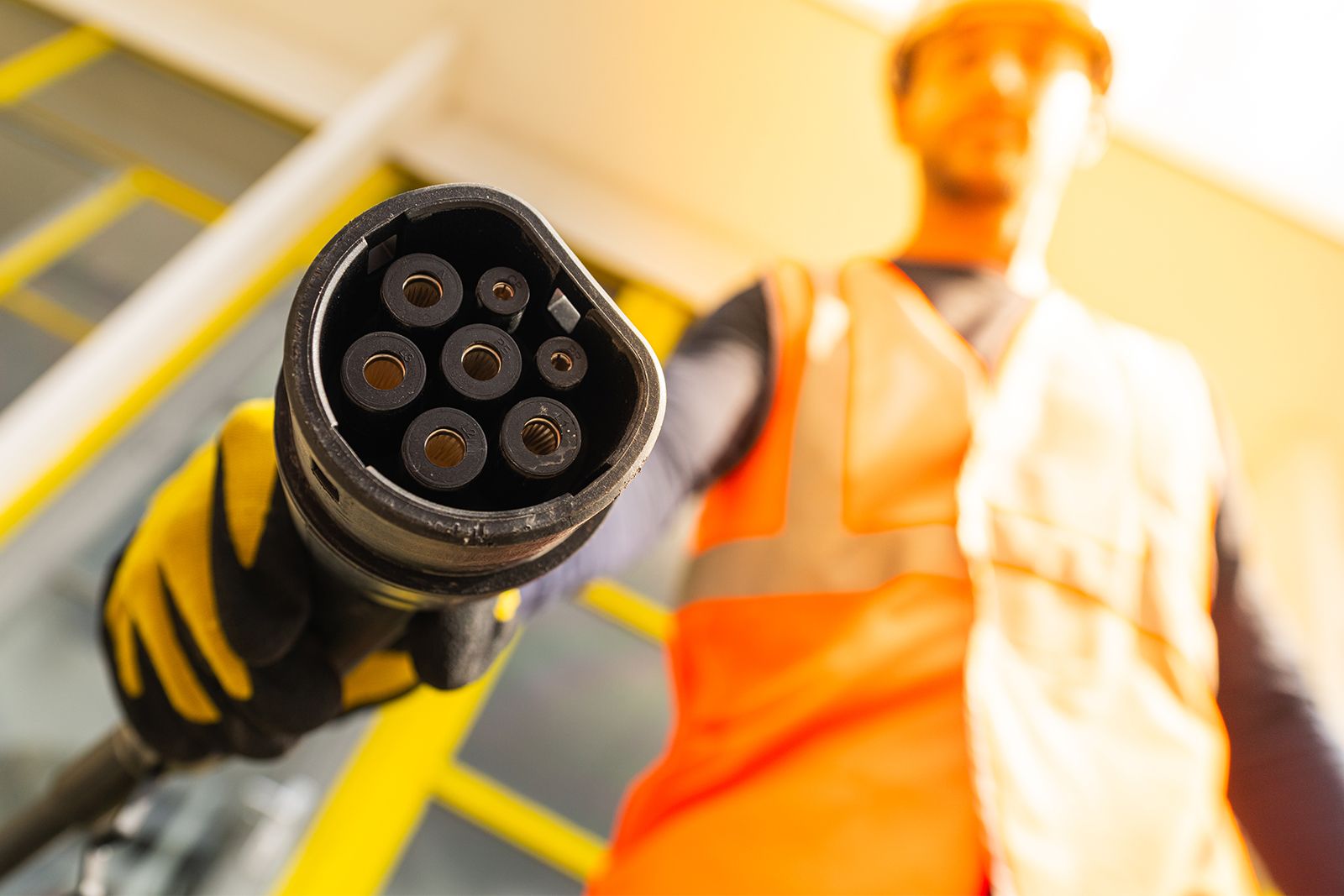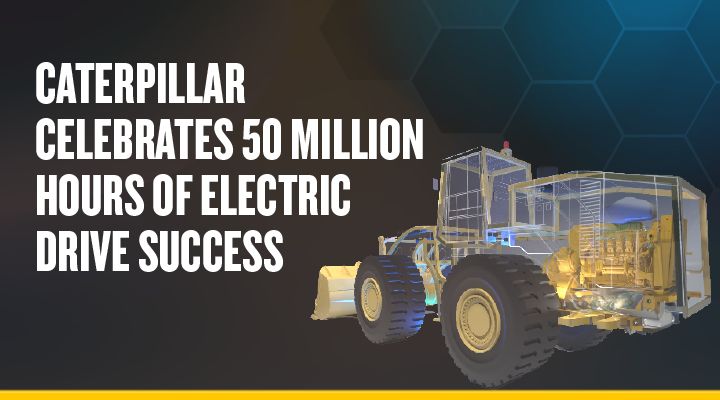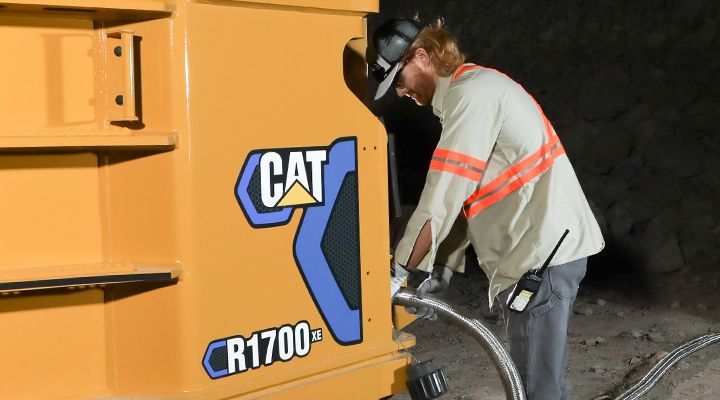If you already have an existing account with another Cat App, you can use the same account to sign in here.
One Account. All of Cat.
Your Caterpillar account is the single account you use to log in to select services and applications we offer. Shop for parts and machines online, manage your fleet, go mobile, and more.
Account Information
Site Settings
Security
Charging Ahead: 4 Questions to Ask Now
Start Thinking About Your Electric Equipment Charging Strategy Today
Explore how Caterpillar is helping customers navigate the energy transition at the world's most renowned tech event. Join us from January 7th-10th in Las Vegas to discover advanced energy solutions designed to power jobsites of the future.
This year's exhibit will highlight a powerful blend of technologies and expertise, showcasing the journey toward a lower-carbon future. As we celebrate Caterpillar's centennial milestone in 2025, CES will provide an opportunity to honor our first 100 years of achievements while looking ahead to the future.
Visit Caterpillar at CES 2025 (LVCC West Hall-booth #6416) to experience what’s possible! #CATatCES
By Idine Ghoreishian, Director of Charging & Infrastructure Solutions, Caterpillar Inc. | Posted: October 2024
If you operate heavy equipment today — one machine or a fleet of hundreds — then you have some sort of refueling strategy in place. Maybe diesel gets trucked to your sites once or twice a day, so machines can fuel up and keep working with little interruption. Maybe you return equipment to a location with an onsite fuel tank every evening. Maybe it’s a combination of approaches.
Have you thought about how your “refueling” strategy changes if you decide to incorporate battery-electric models into your operation? There are all kinds of factors to consider as you think about going electric, even if you just plan to try out a machine or two at first. How, where and when you’ll charge equipment should be near the top of the list. I’d recommend starting by asking yourself these four questions:
1. What Do My Applications Require?
You probably don't use large and small machines to perform the same task. When it's time to electrify, you probably won't charge them the same way, either. Let me give you a couple examples:
First, consider a small piece of equipment working on a high-rise construction project in an urban environment. Because it only runs during the day, you can connect it to a mobile AC power charger overnight. Mobile charging makes the most sense because the machine will stay on site for a portion of the project but won't be required for an extended time. Low-and-slow AC power is a good fit because the machine has until morning to reach a full charge.
Now, compare that to a large electric machine working in a landfill or on a mine site, perhaps running two or even three shifts a day. In this situation, a fixed or stationary charger may be a better solution since the machine never leaves the site. And fast DC power would enable a quicker charge between shifts, helping reduce downtime.

Bottom line: The type of equipment you operate and the applications you perform should drive your charging strategy — including the number of chargers required, their power level and their location.
2. What Are My On-site Power Capabilities?
When it comes to charging, where you work may be just as important as the type of work you do. If you plan to take on projects where electric machines run for months or even years on the same site, then you need to evaluate how that location’s utility and power supply affects your ability to charge them — quickly, reliably and cost-effectively.
Does power already exist on site? If so, is it sufficient for the number of machines that need to be charged and the frequency of those charges? If not, what additional resources are required to deliver the necessary power? What financial investment is required to upgrade the site and who will cover those costs?
One thing to keep in mind: If a site needs utility upgrades, be sure to factor the time required to perform them into your electric machine acquisition plans. In some locations, it can take a year or longer to complete these upgrades. The last thing you want is to invest in electric equipment, then have it sit idle while you wait for the ability to charge it.
3. How Can I Optimize Charging?
The price of electricity tends to be more stable than that of diesel, but there’s another factor that could dramatically affect how much you pay to charge equipment: peak demand response.
A quick refresher: Peak demand refers to those times when the electricity grid experiences its greatest loads. Think the middle of the afternoon on the hottest days of the summer when everyone’s air conditioning is running full blast. On a normal day, you might pay around 16 cents per kilowatt-hour. During peak demand, if you don’t stay under a certain power usage, you pay a demand response. That could raise the price significantly — say it goes up to $16 a kilowatt-hour. If your equipment is charging then, what’s the impact on your cost of ownership and profit margins?
To avoid added and unexpected costs, it’s a smart strategy to optimize charging schedules. Good news: There’s software that does just that. Integrated into your charger, it automatically monitors the grid, then can stop, start or reduce charging levels to help you avoid demand response and take advantage of the lowest electricity rates.
As you’re evaluating sources for electric equipment and chargers, ask about optimization and what services are available to ensure your machines are charged and ready to go at a cost that fits your budget.
4. How Can I Offset Some of the Cost?
Speaking of budget, there’s no question that electric equipment is an investment — especially when you consider the need to factor in charging equipment, software and other services as part of the overall package. That’s why it pays to take advantage of the incentive programs, tax credits, grants and subsidies available in many locations.
In the U.S., that includes the federal Inflation Reduction Act, the Department of Energy’s Alternative Fuel Tax Credit and the Environmental Protection Agency’s Diesel Emissions Reduction Act. Most states also offer incentives of some kind — typically in the form of rebates, discounted utility rates or other credits. There may also be regional and local programs in your area.
Finding and leveraging these incentives does require some legwork. Ask your accountant or tax professional or turn to an industry group like the Association of Equipment Manufacturers (AEM) or Associated General Contractors America (AGC) for advice and assistance.
We're Here To Help, Too.
As the heavy equipment industry electrifies, we’re all learning what works best and what needs improvement. At Caterpillar, we want to hear about your expectations and challenges, so we can work with you to choose the right path forward. The more conversations we have today, the better the solutions we’ll be able to bring to your jobsites tomorrow.

Idine Ghoreishian
Director of Charging & Infrastructure Solutions, Caterpillar Inc.
Idine Ghoreishian has spent the last 20 years of his career working in a variety of industries including wireless communication, light-duty OEM automakers and vehicle charging space. Currently, he is part of the team leading the path for charging solutions at Caterpillar as they embark upon electrification. He comes from two startups which have been acquired by oil and gas companies, namely Greenlots and Amply Power, both of which led the way for growth in public charging and fleet charging solutions. He is a graduate of Virginia Tech holding both a bachelors and master’s degree in electrical engineering.
Related Stories
-
Supporting the Energy Industry’s Carbon-Reduction Journey
Energy is foundational to every economy and a force multiplier for modern society’s most basic and essential functions — from powering homes to fueling the world’s vast transportation and supply chain networks. As global growth and the proliferation of data centers exponentially increase worldwide energy demands, the oil and gas industry must overcome the challenge of how to access and produce additional resources while also reducing greenhouse gas (GHG) emissions.
Learn More -
50 Million Hours of Electric Drive Success
Many of us think of electrification as a relatively recent trend. After all, it’s been less than 30 years since the launch of the first mass-produced hybrid vehicle (Toyota Prius) and just 15 since the debut of the first mass-market EV (Nissan Leaf).The fact is, from the mid-1990s through today, nearly 9,000 Cat® products with electric drivetrains have been working on customer sites. In 2024, that equipment topped 50 million hours of operation, which is equivalent to 5,704 years.
Learn More -
Going Electric? Go Digital, Too.
Think about what’s required to keep your diesel-powered machine running. For the most part, if you conduct regular preventive maintenance and keep it fueled up, you’re good to go. Things aren’t so simple with electric equipment.
Learn More -
Caterpillar at CES 2025
2025 marks Caterpillar’s centennial year, and I can’t think of a better place to launch the celebration than CES 2025. Why’s that? Because innovation has driven our success — and more importantly, our customers’ success — for a century now. After all, Caterpillar was built on a breakthrough: Our founders revolutionized the work for farmers in the early 1900s by replacing the wheels on a tractor with tracks. The rest, as they say, is history.
Learn More









